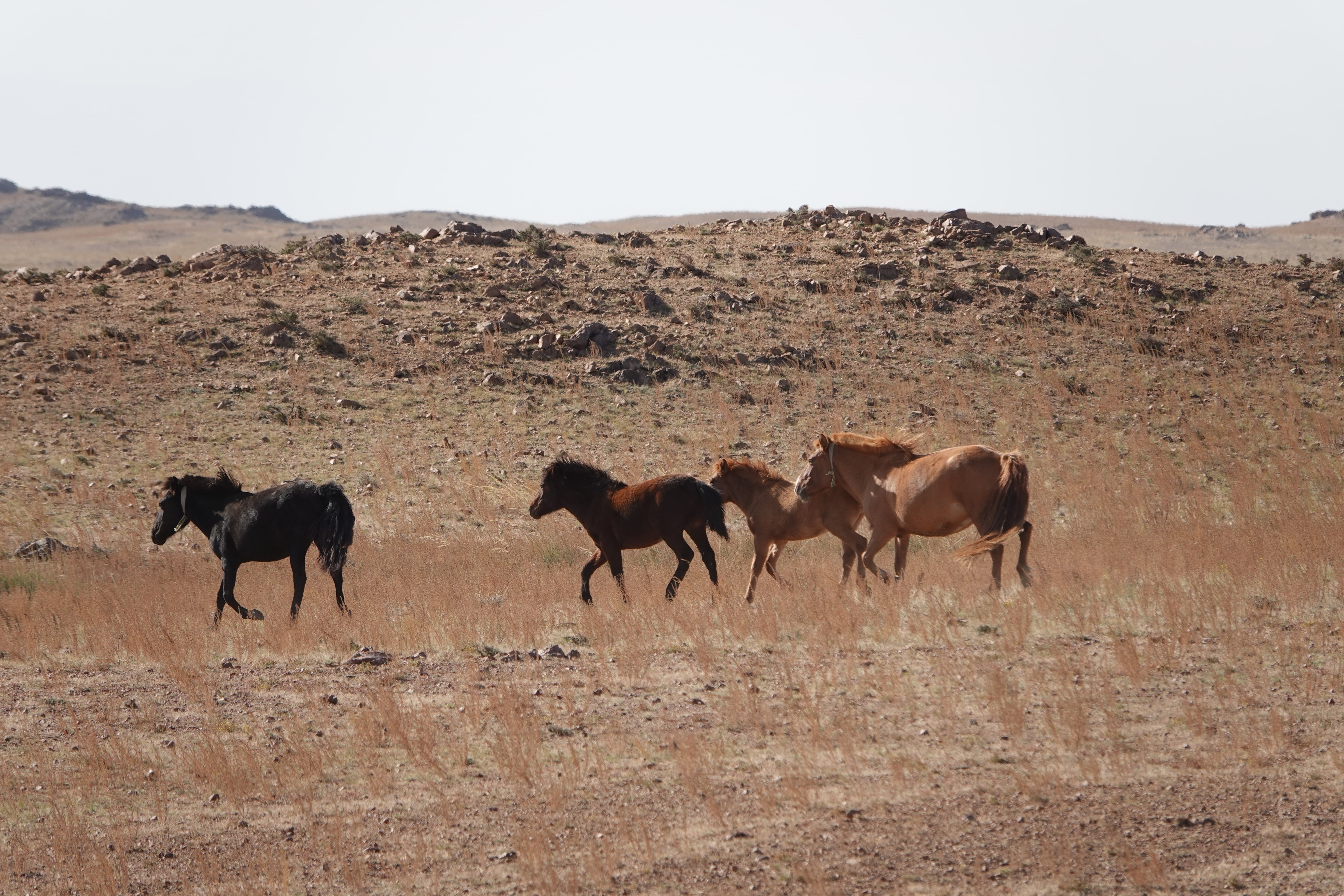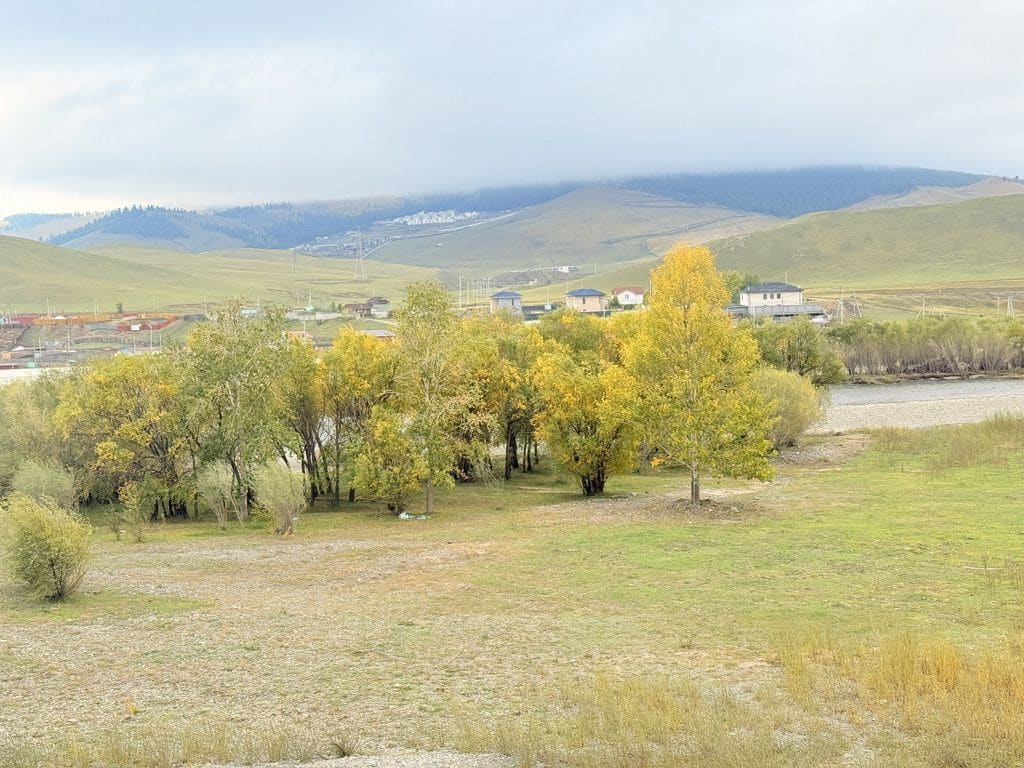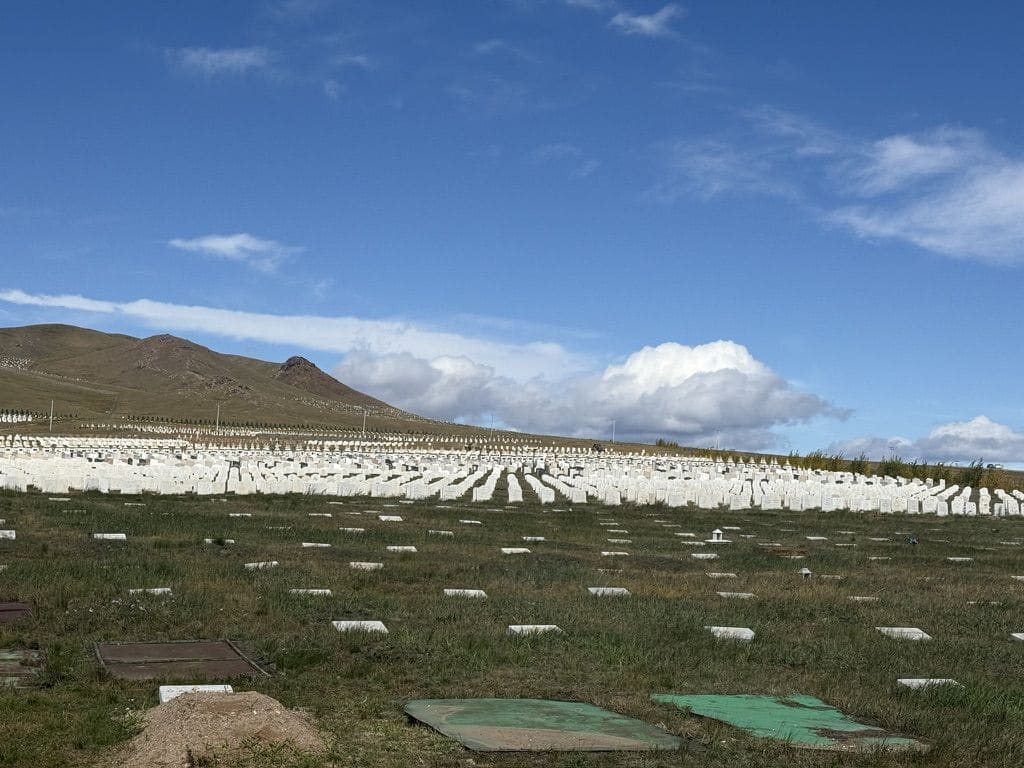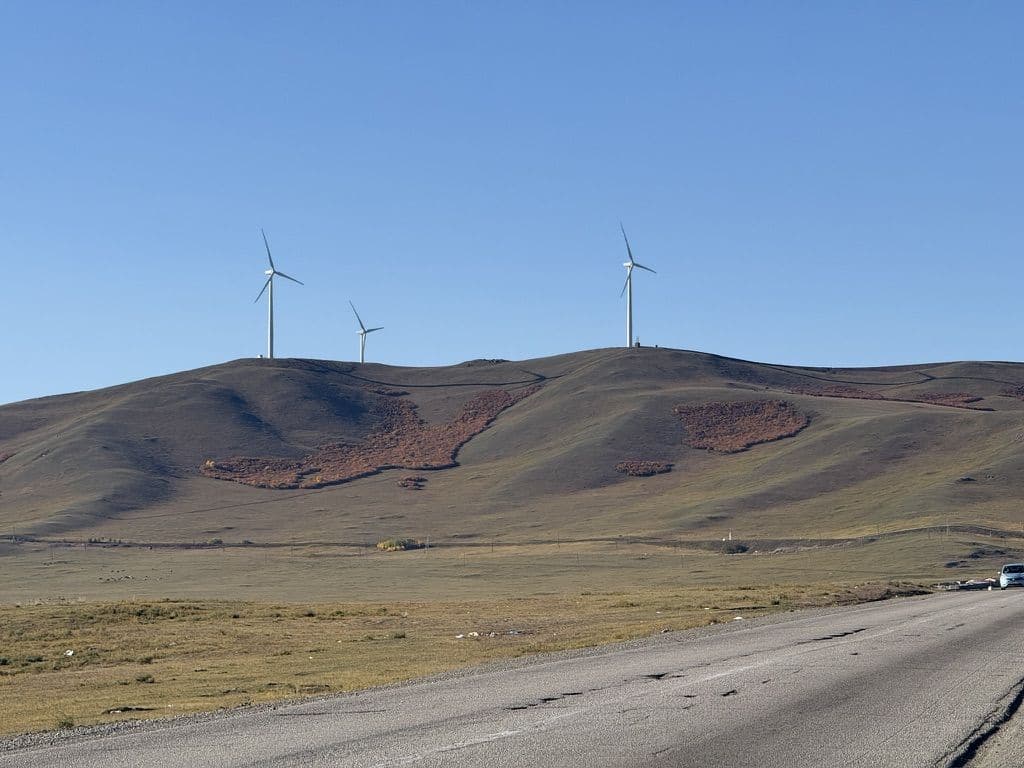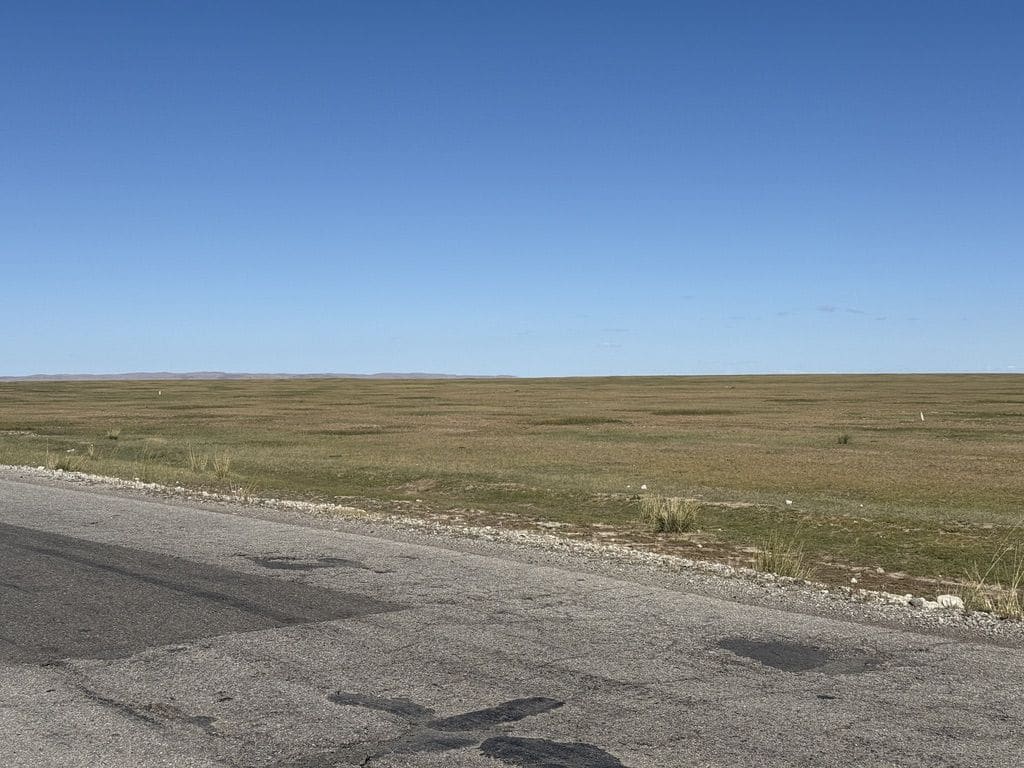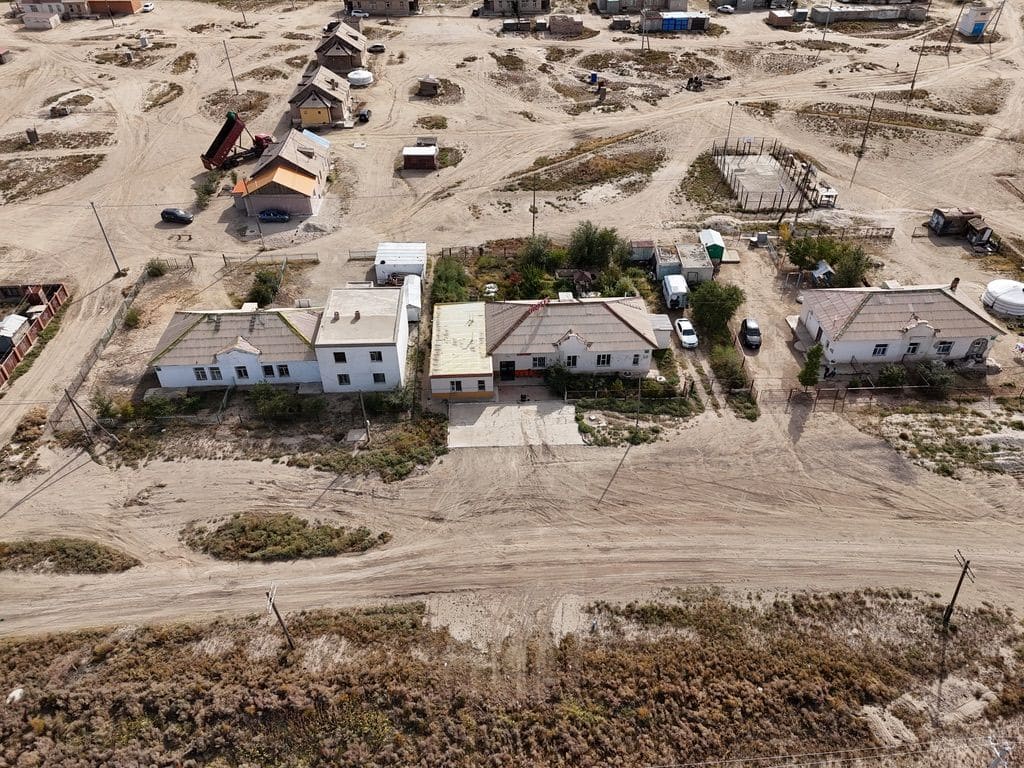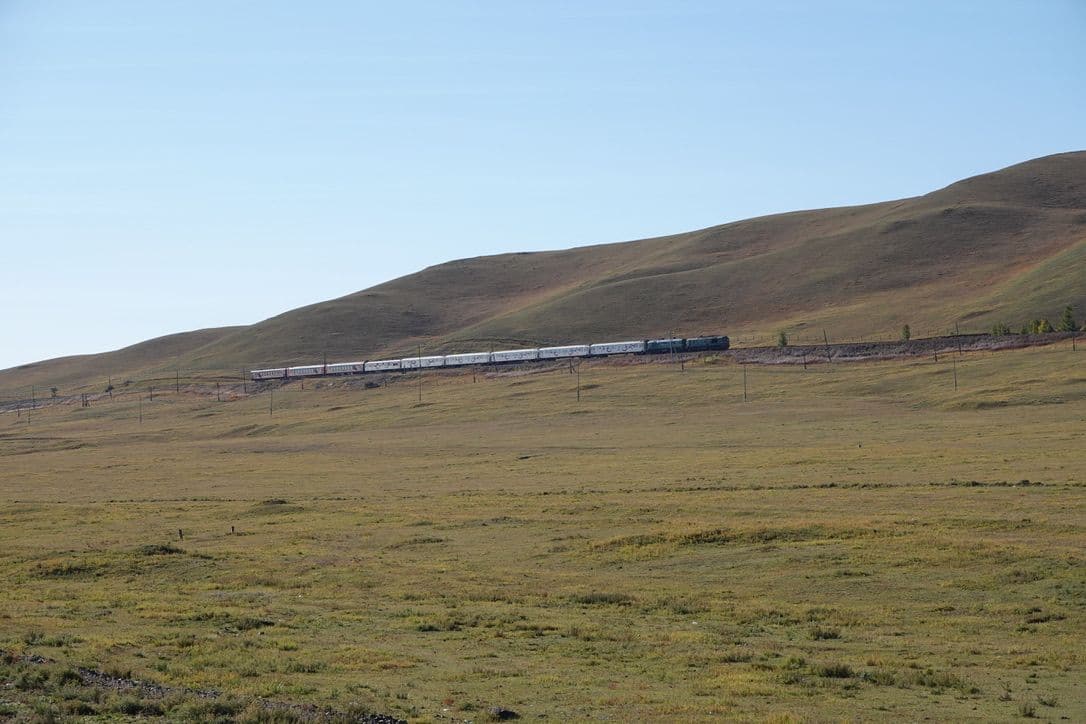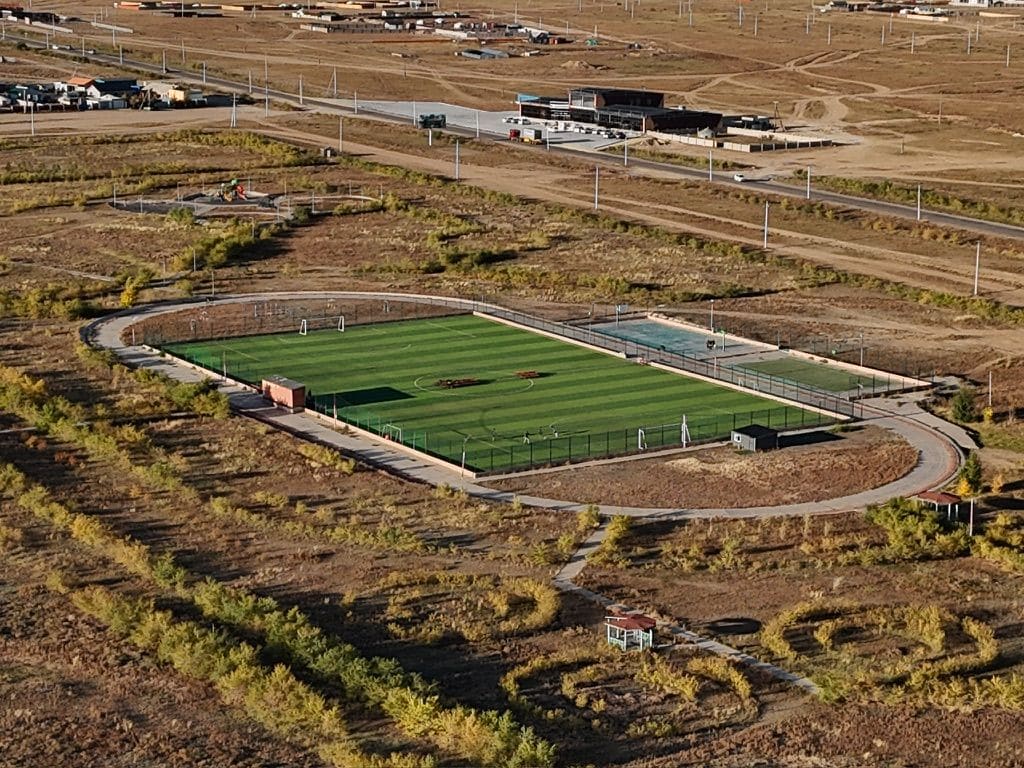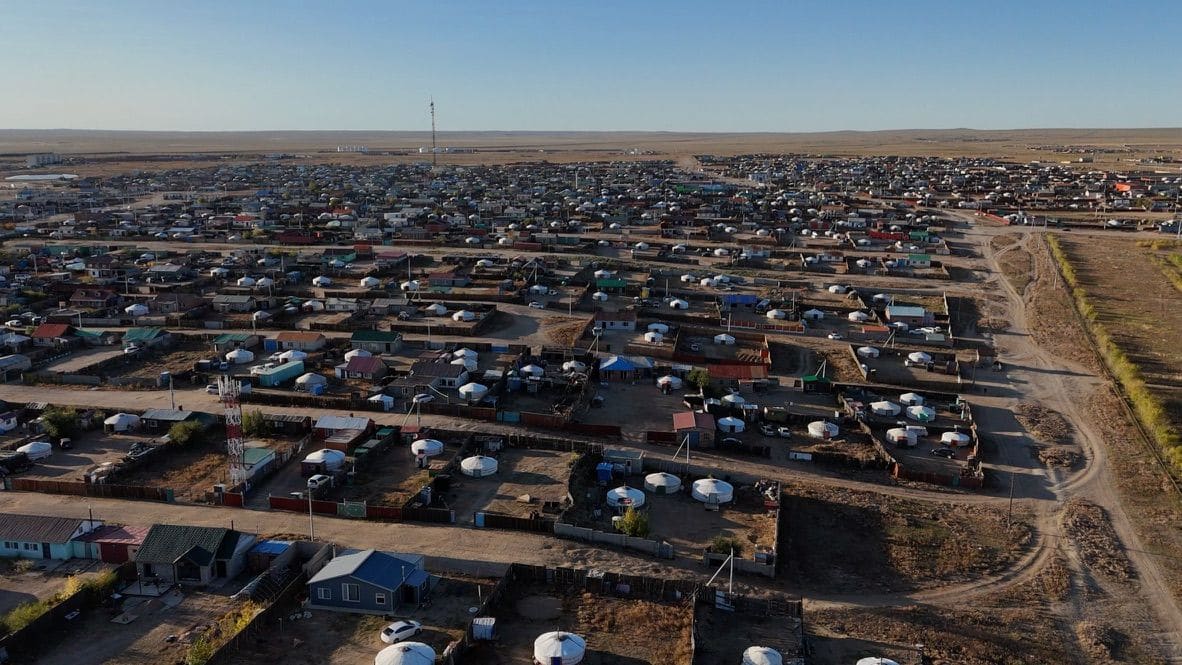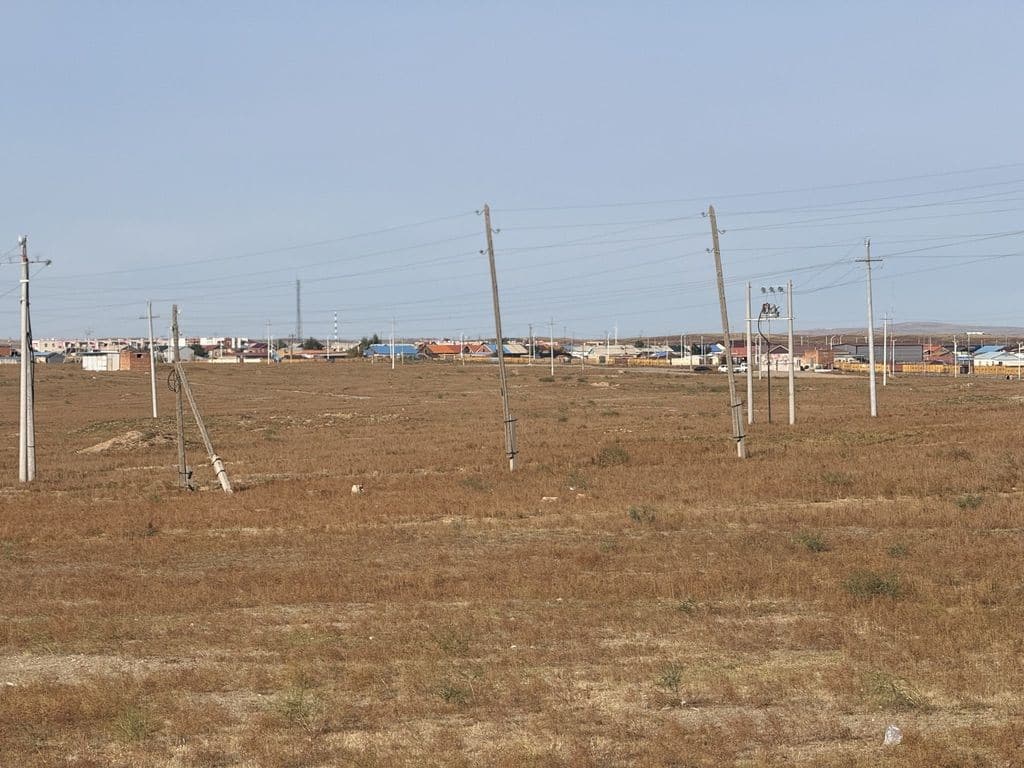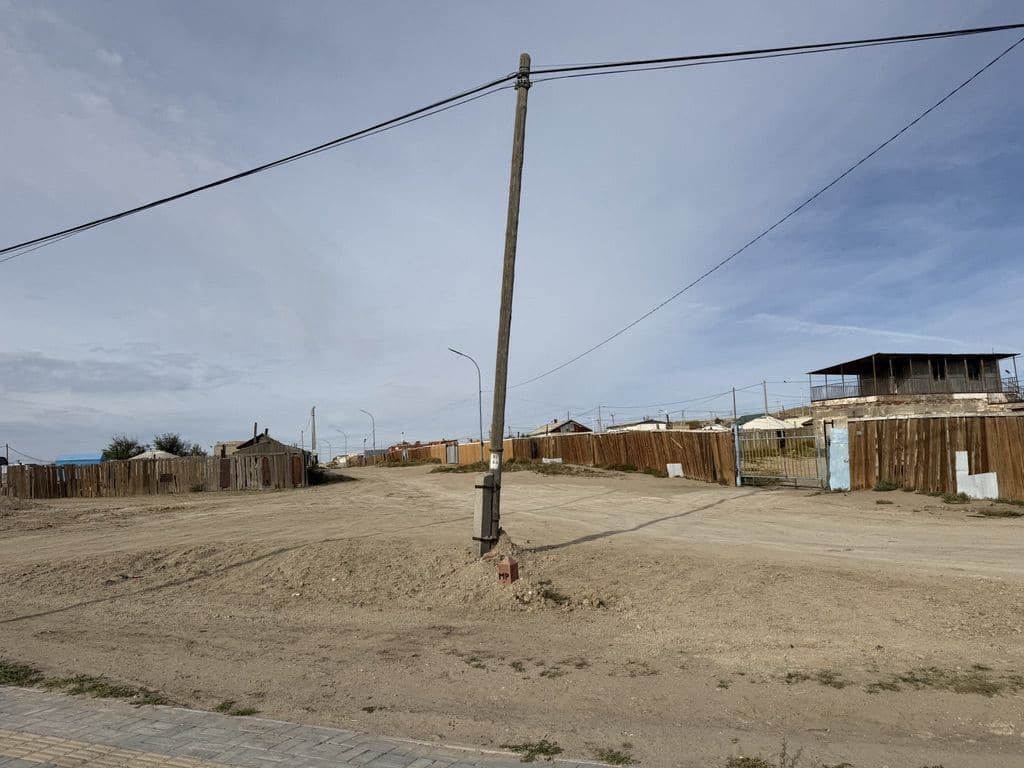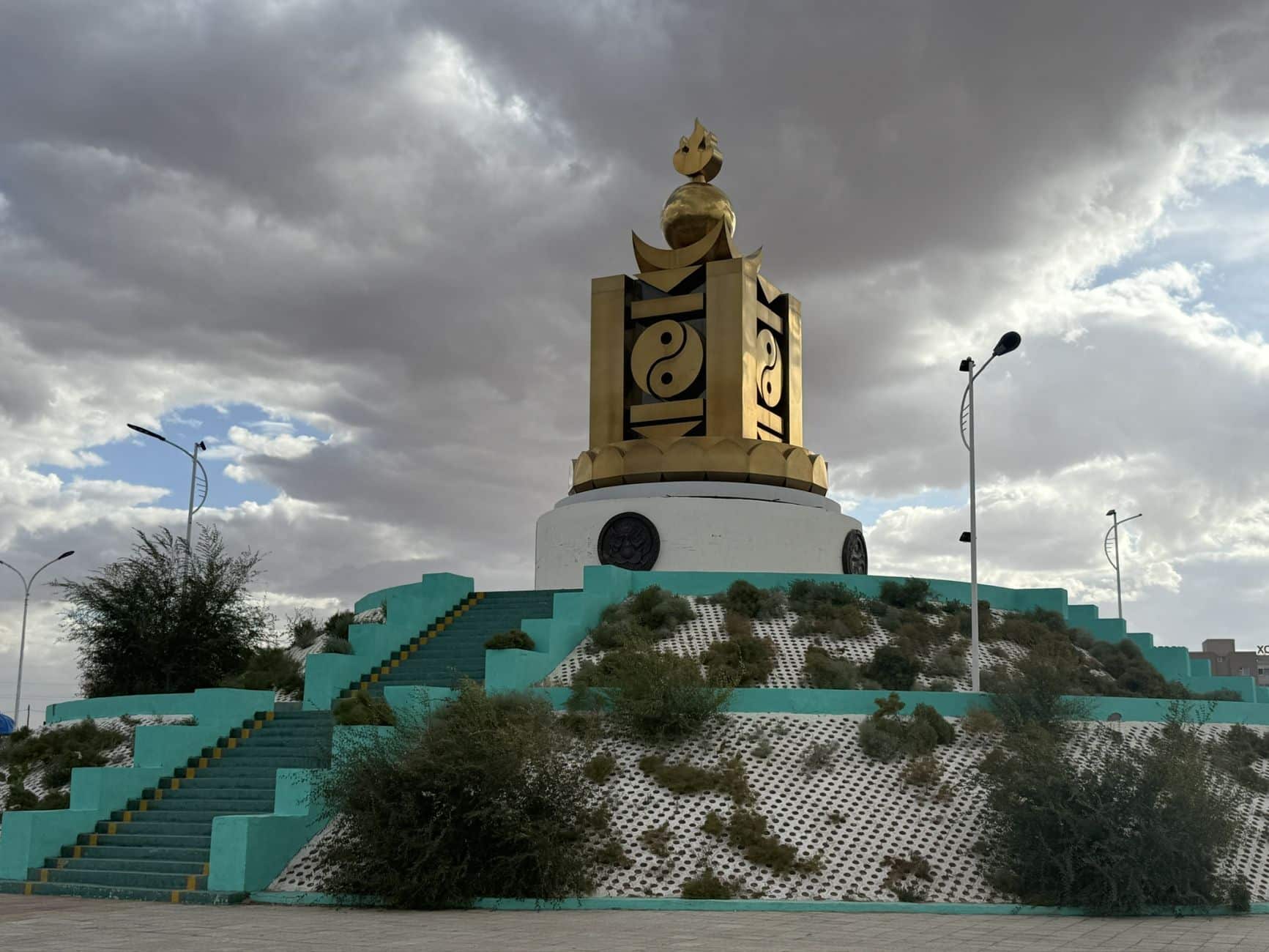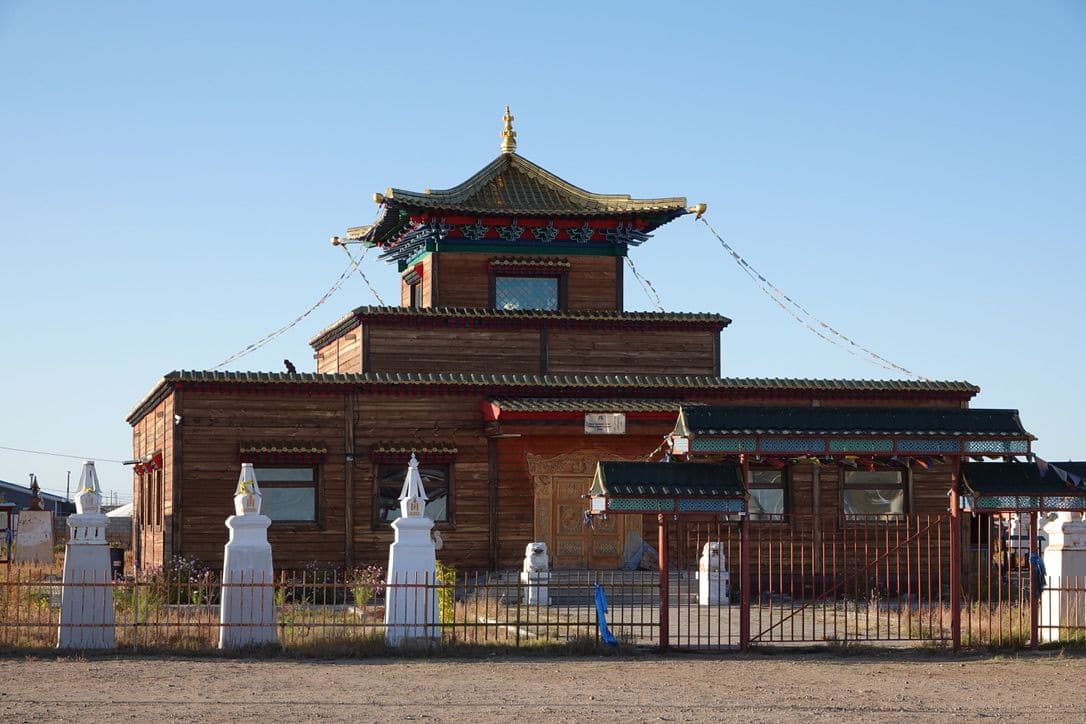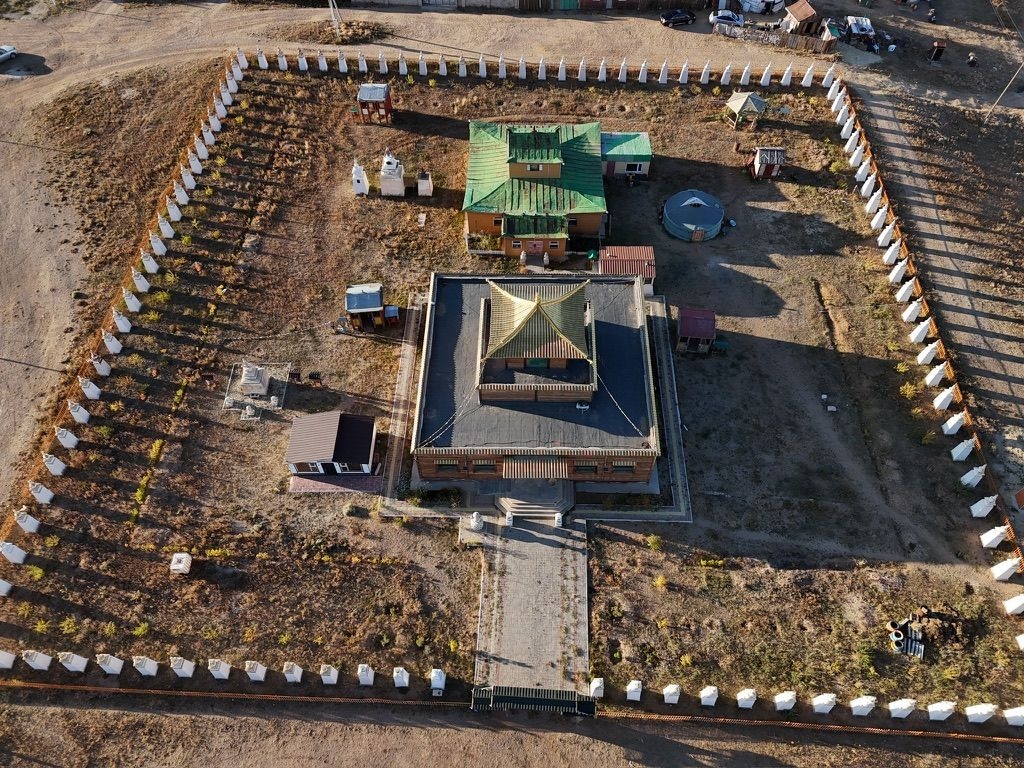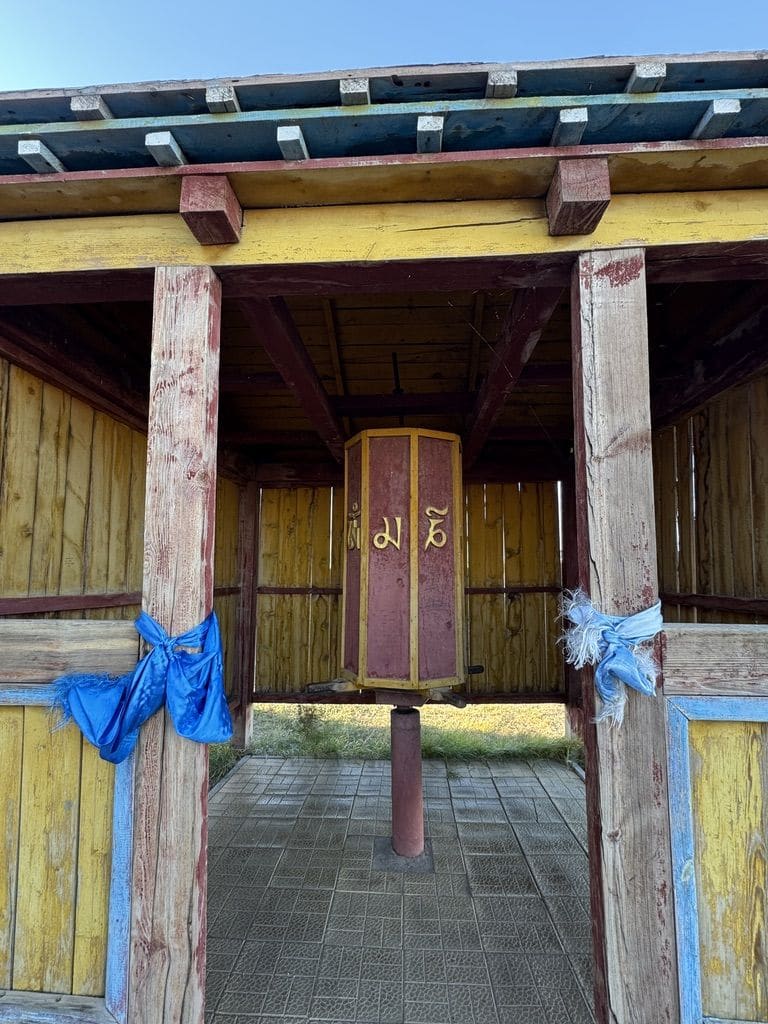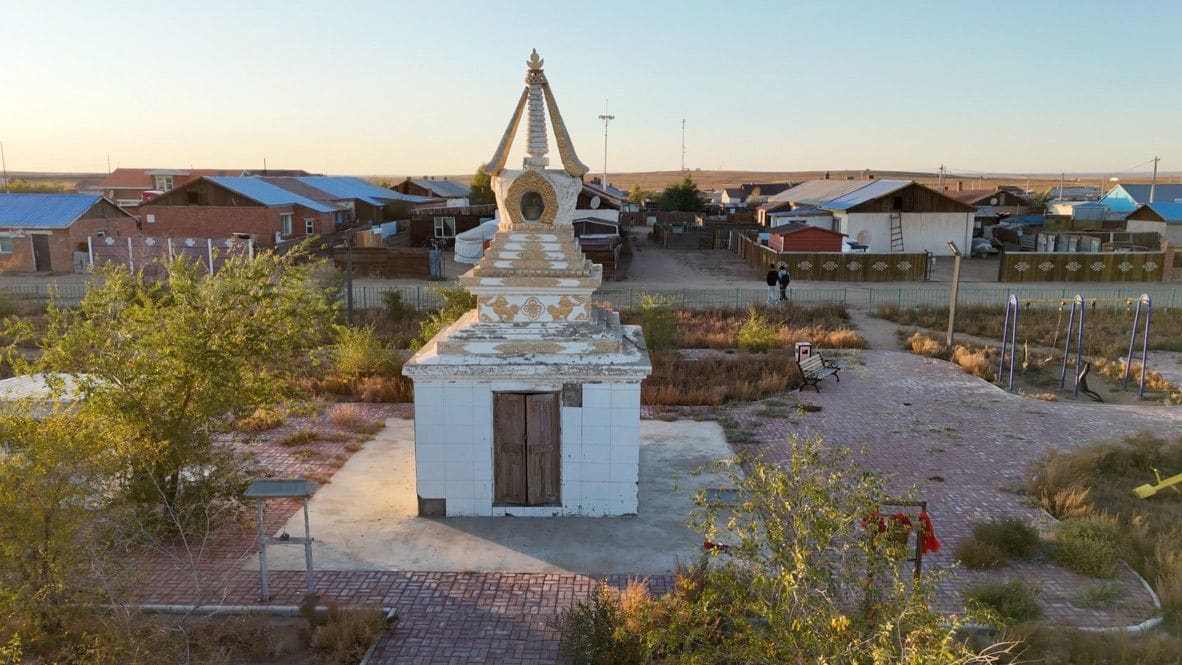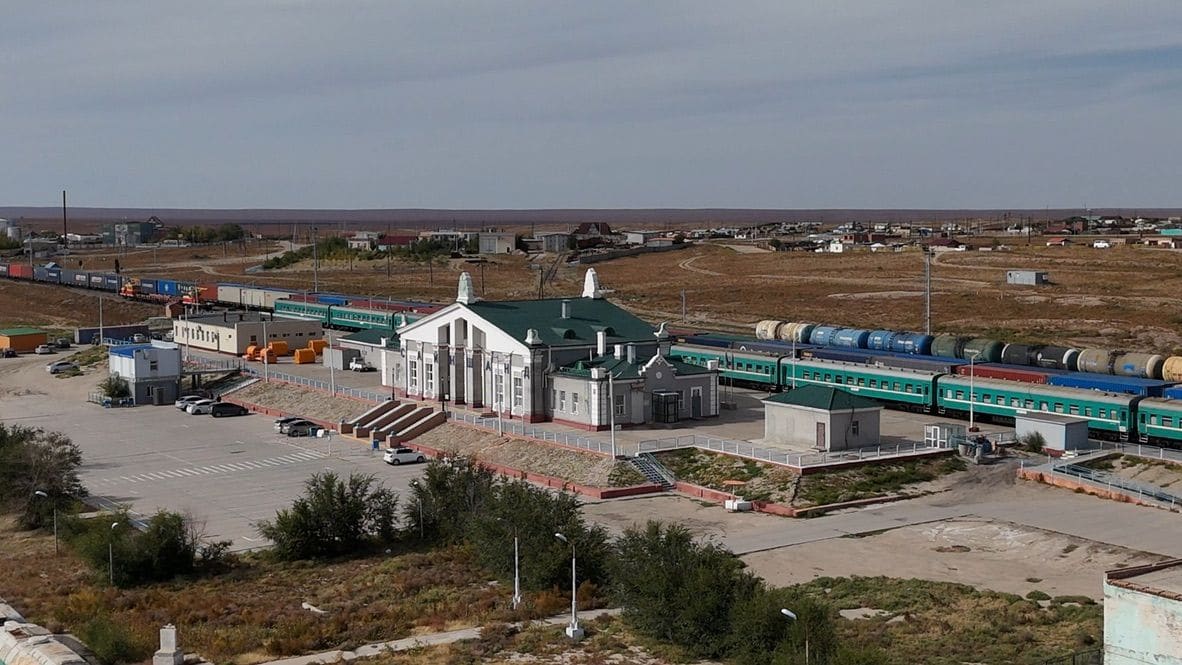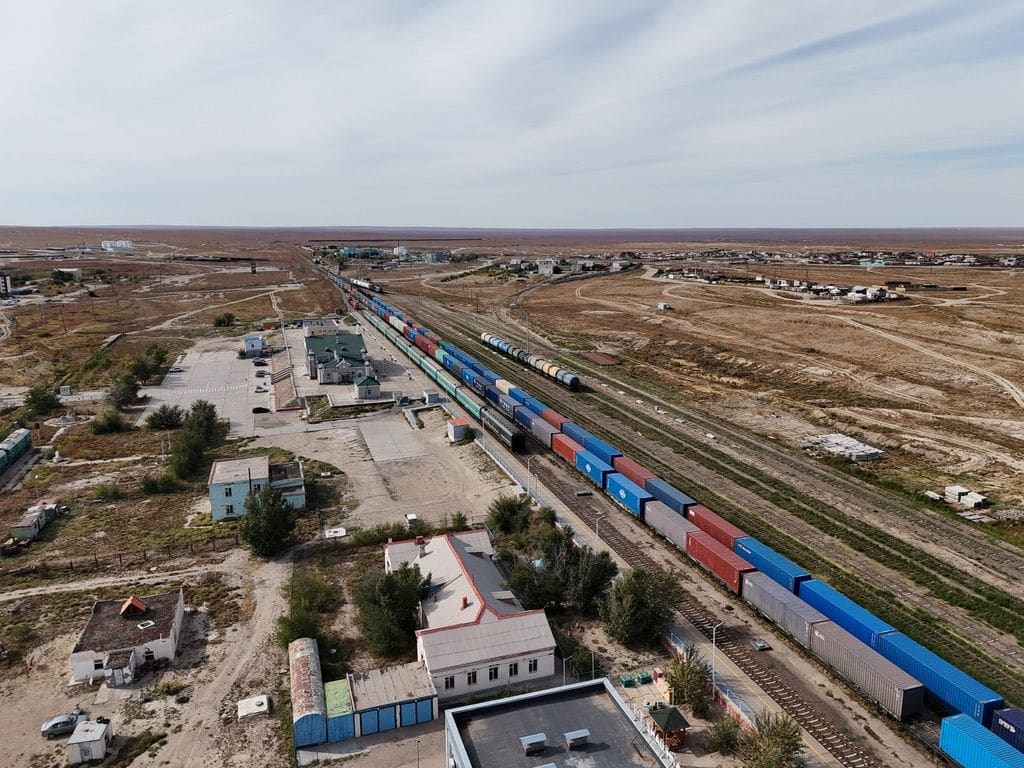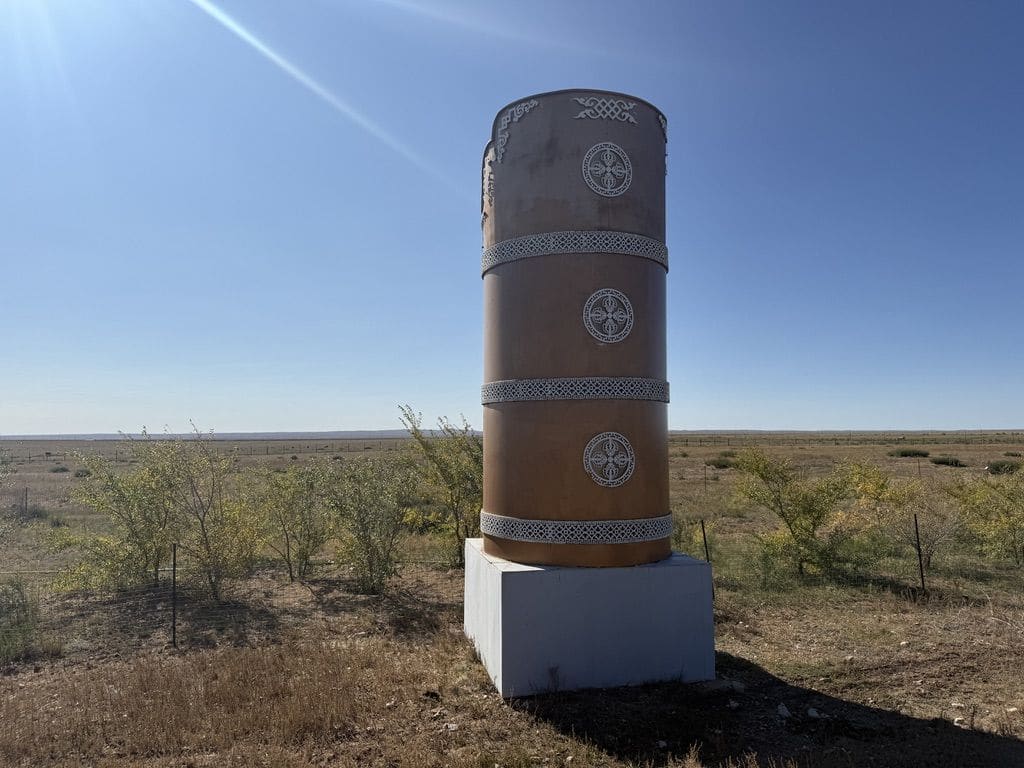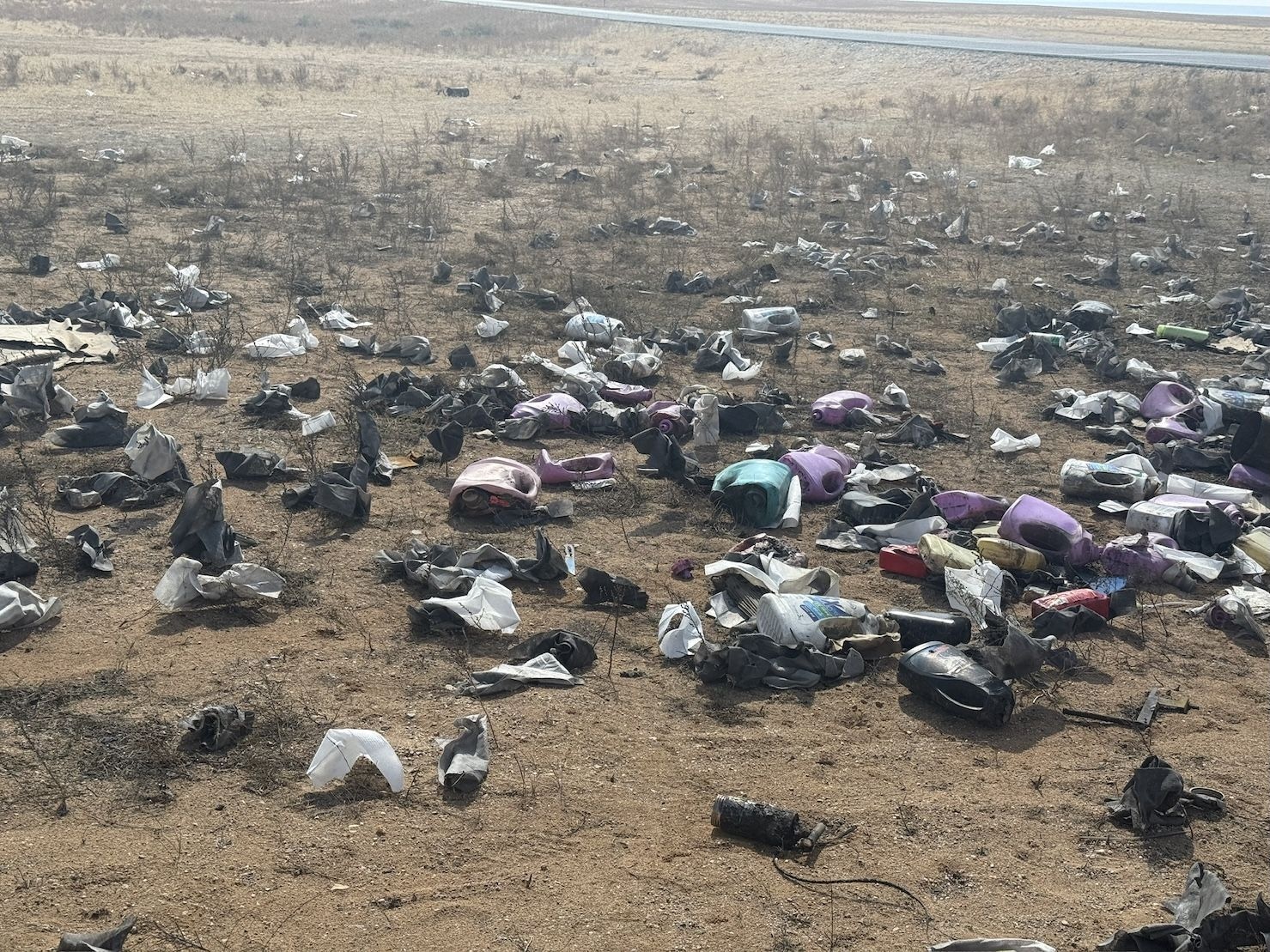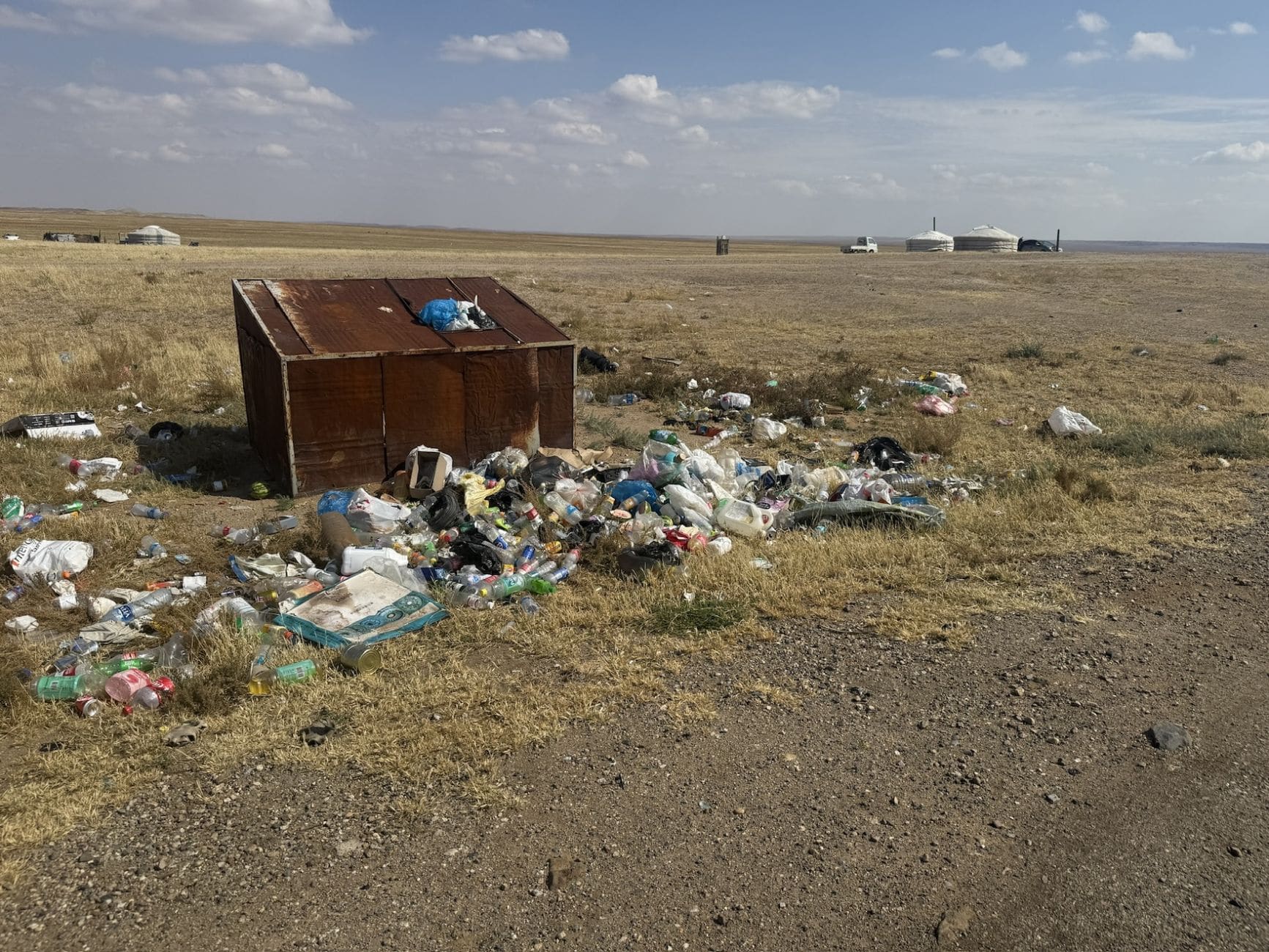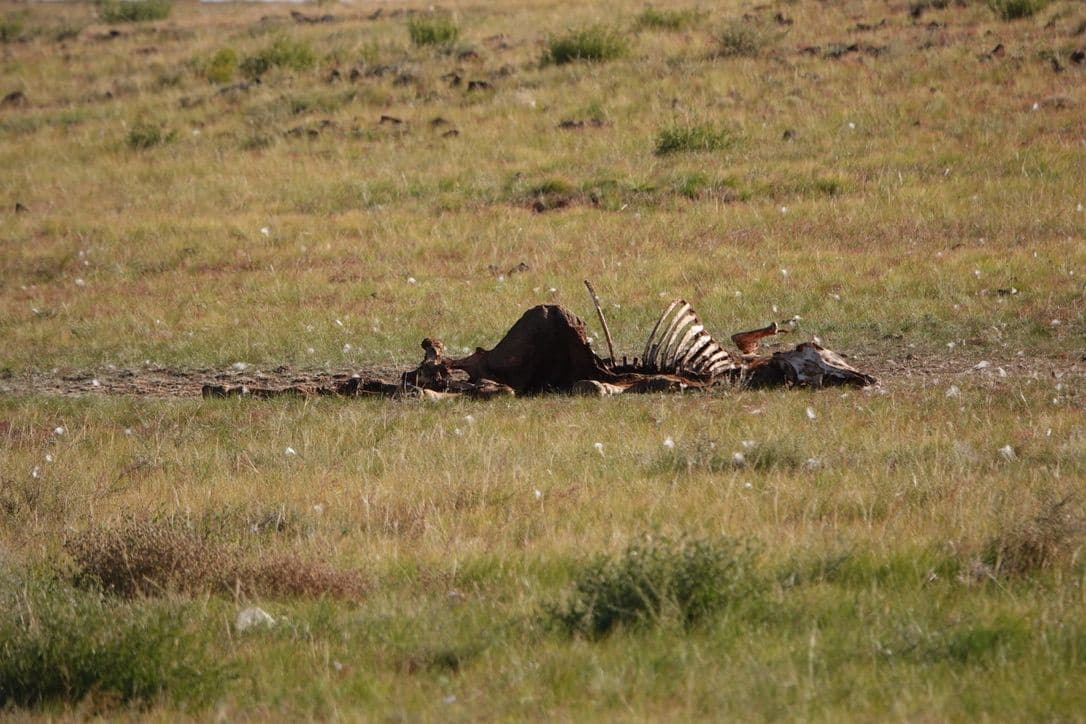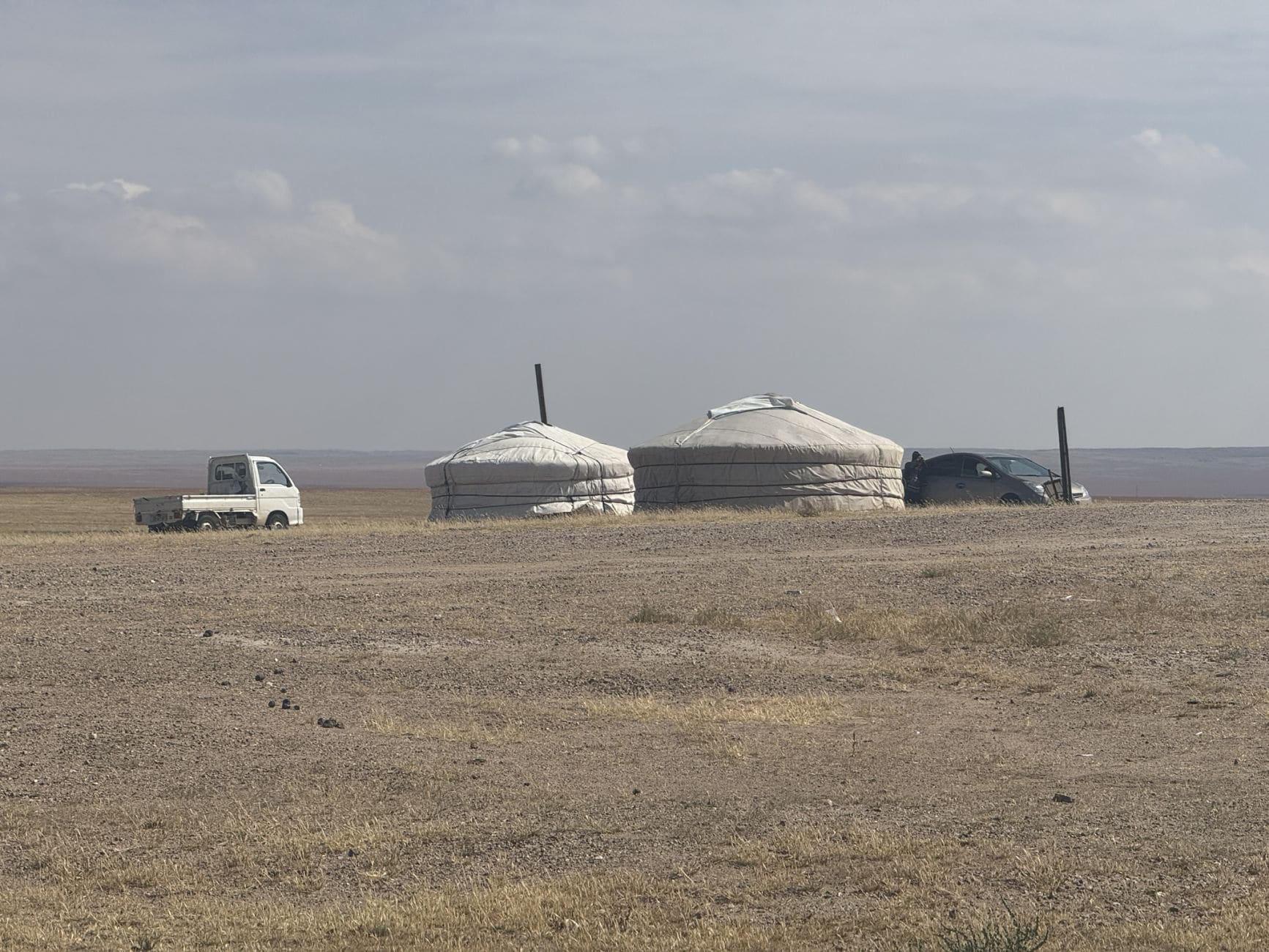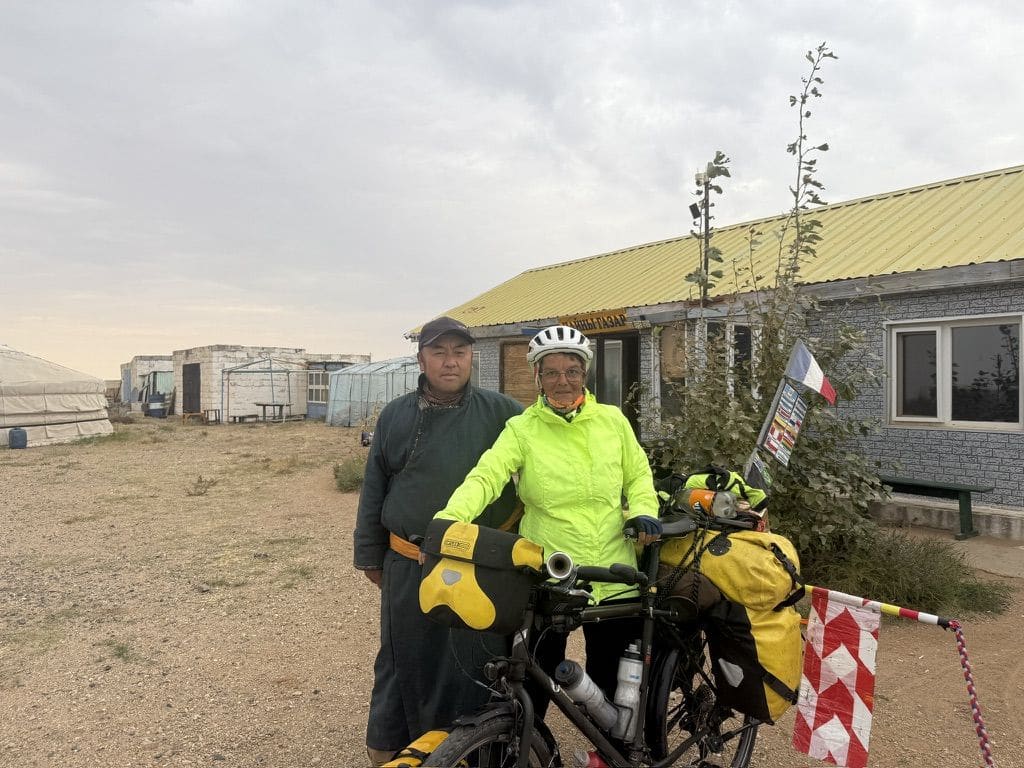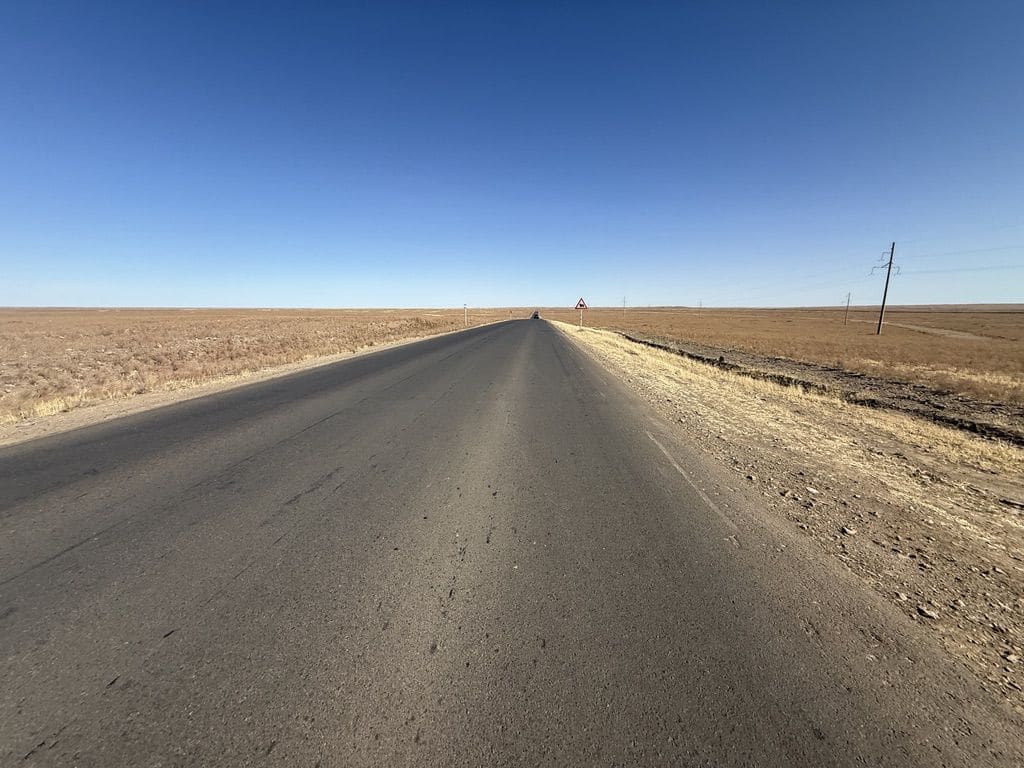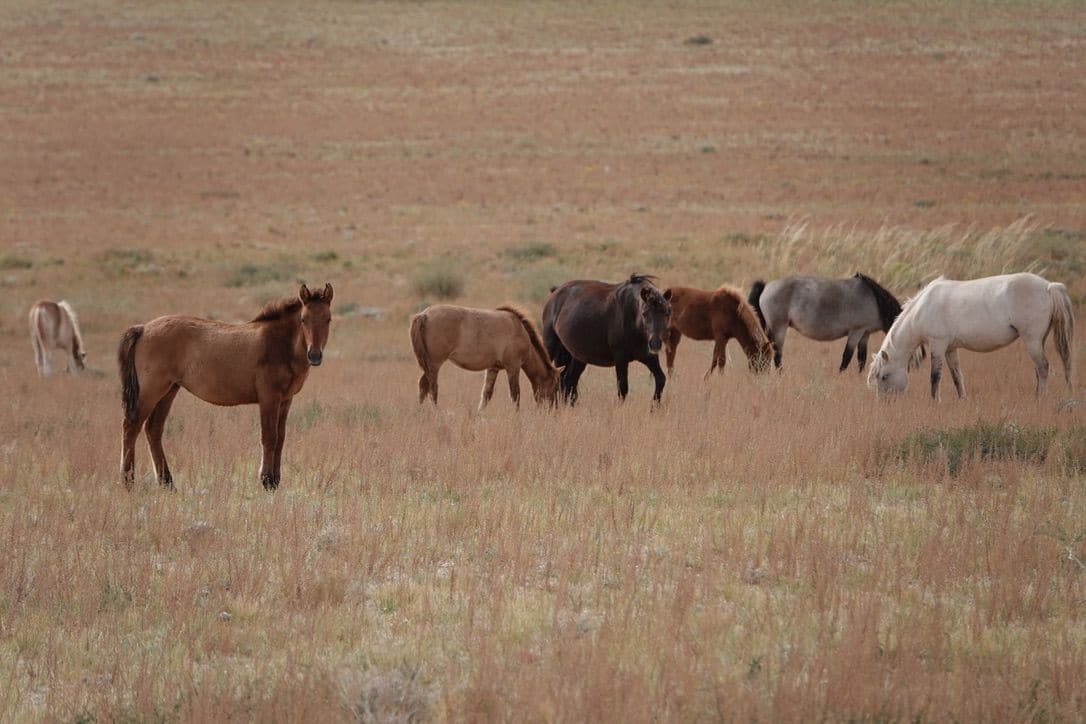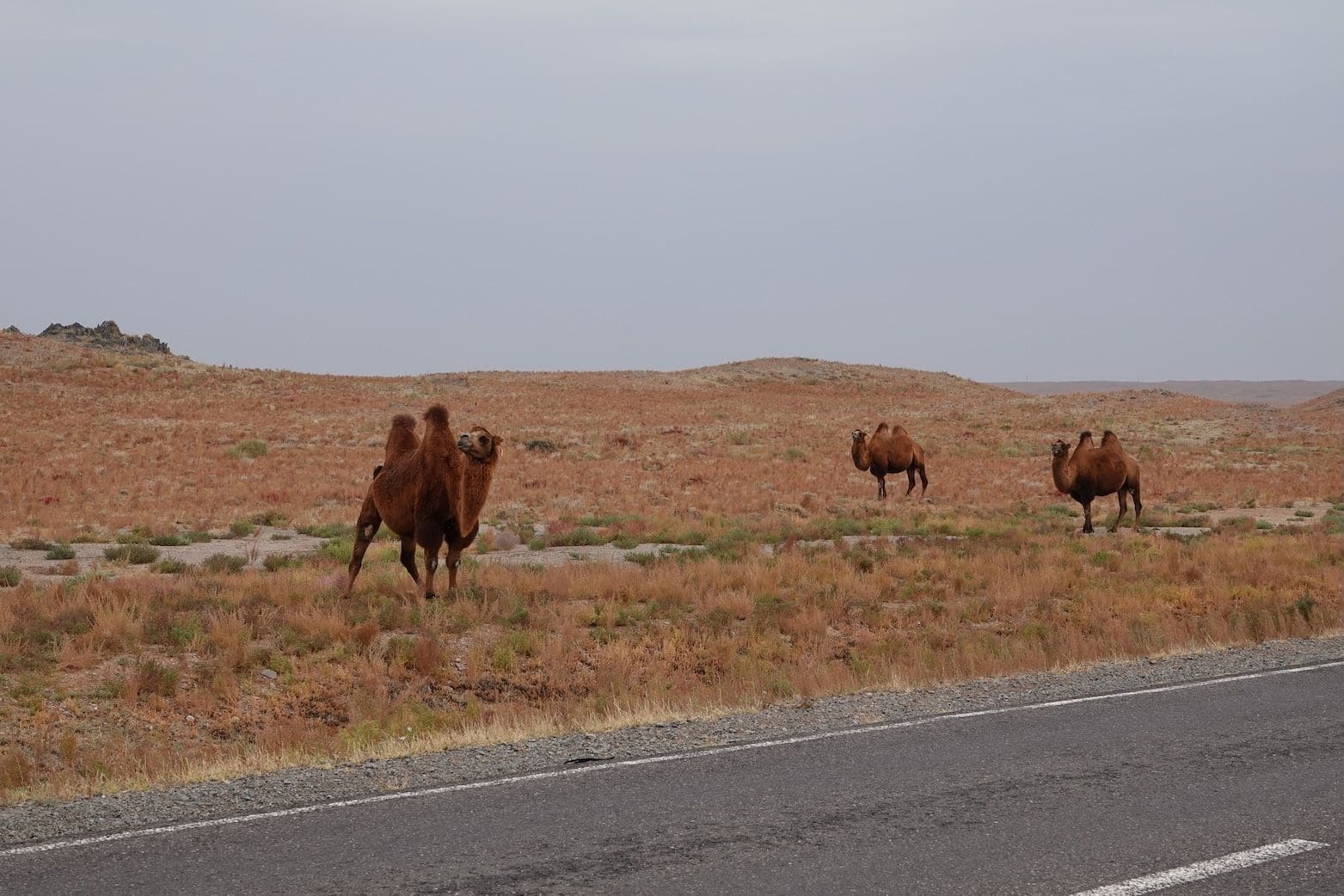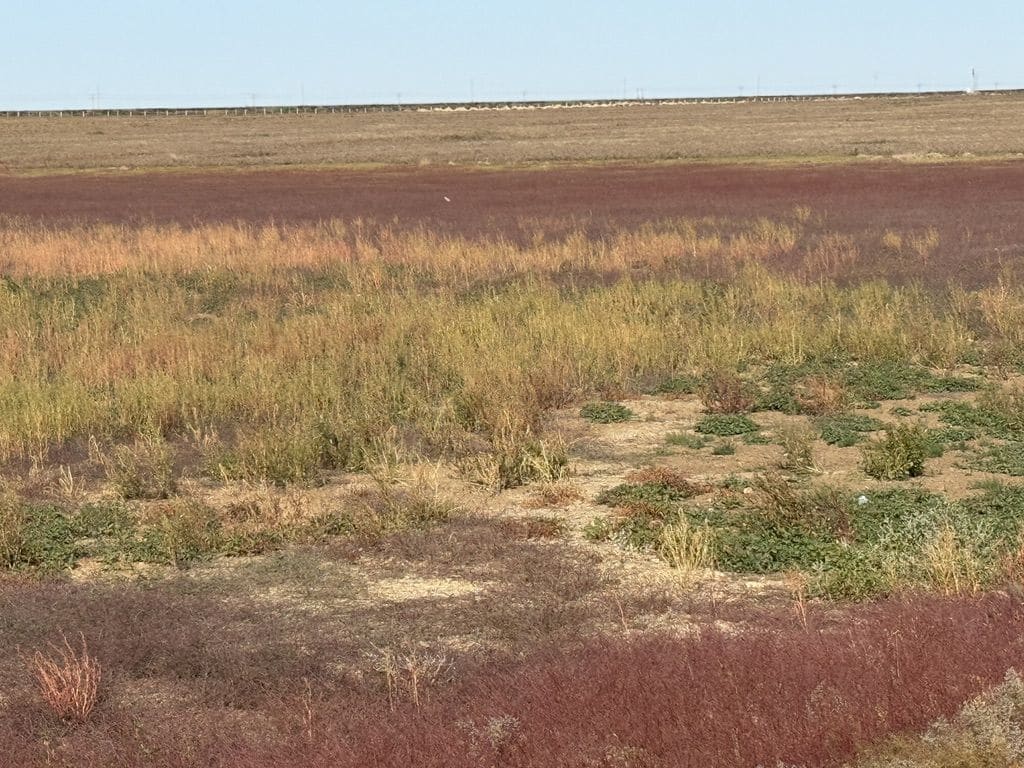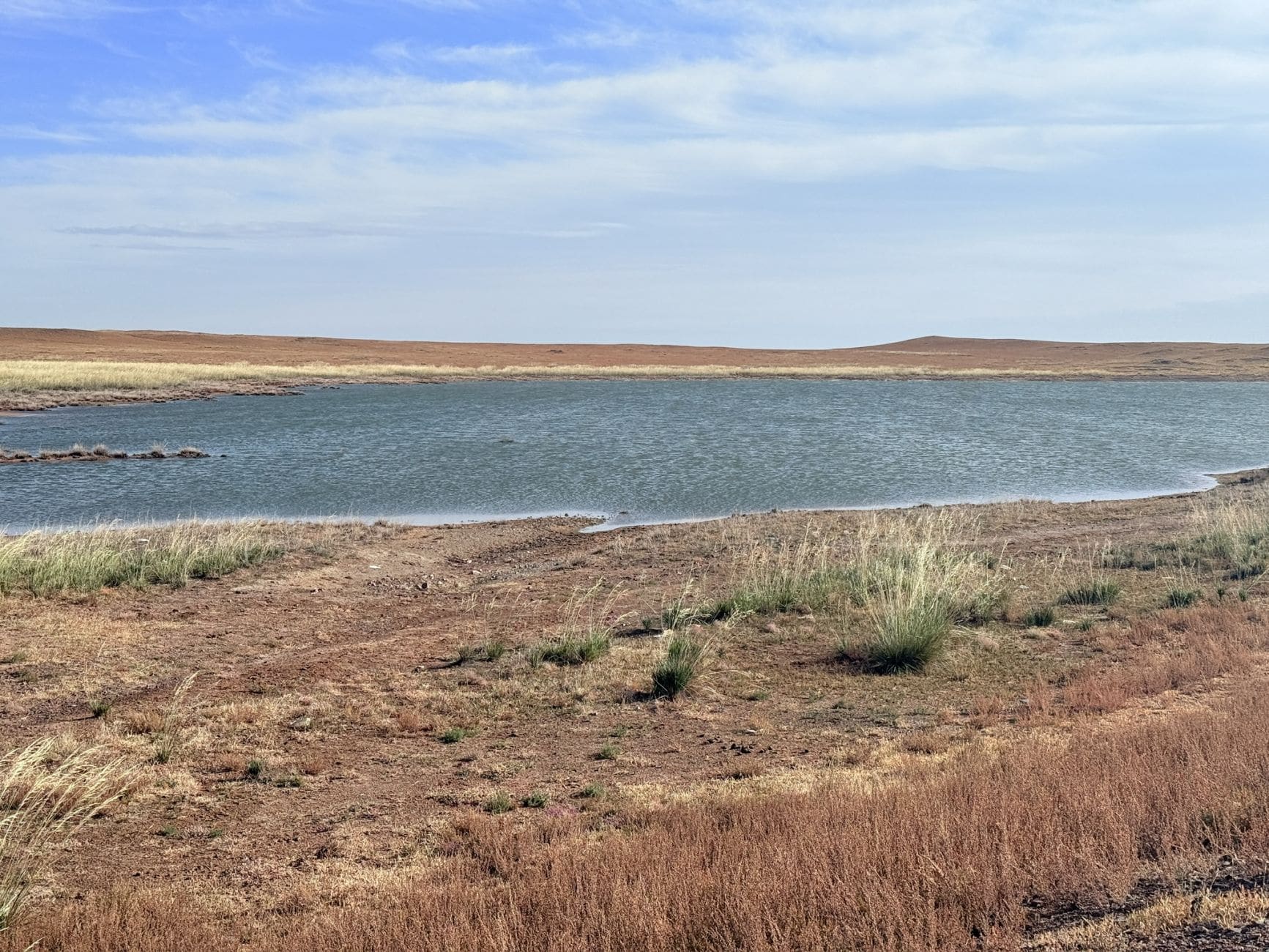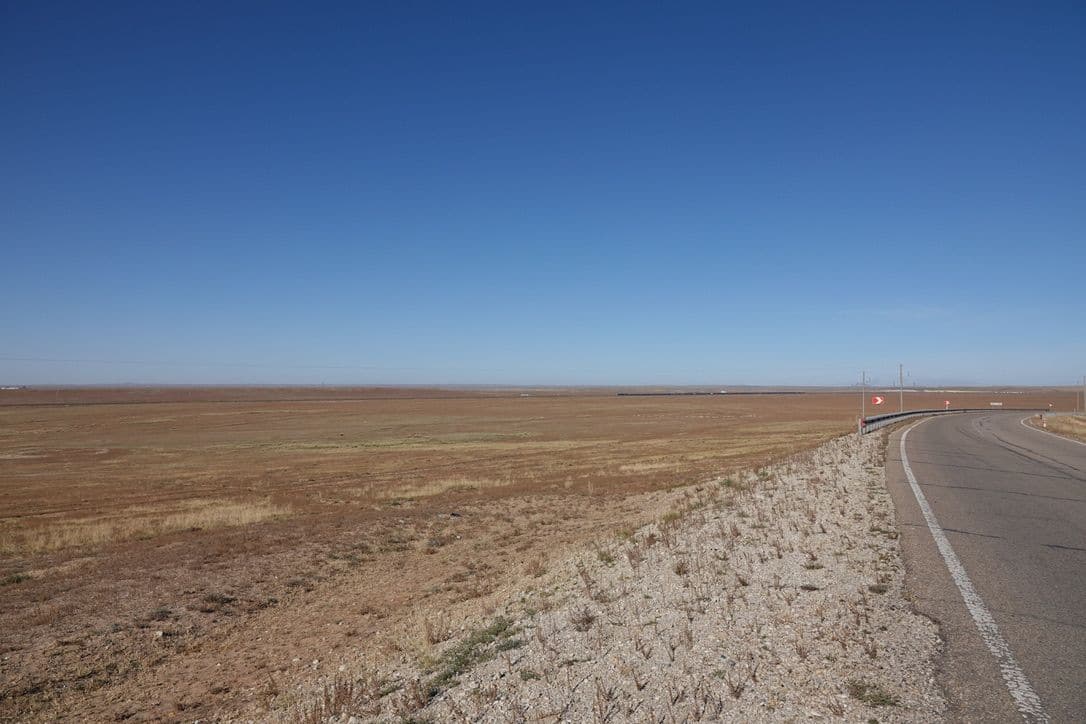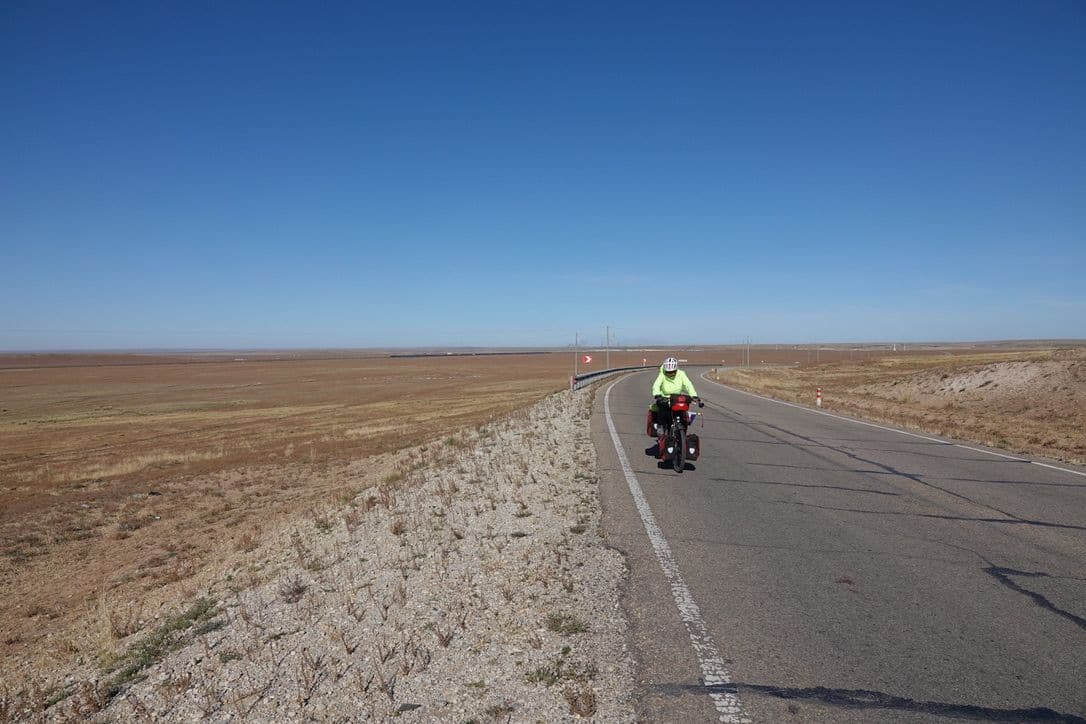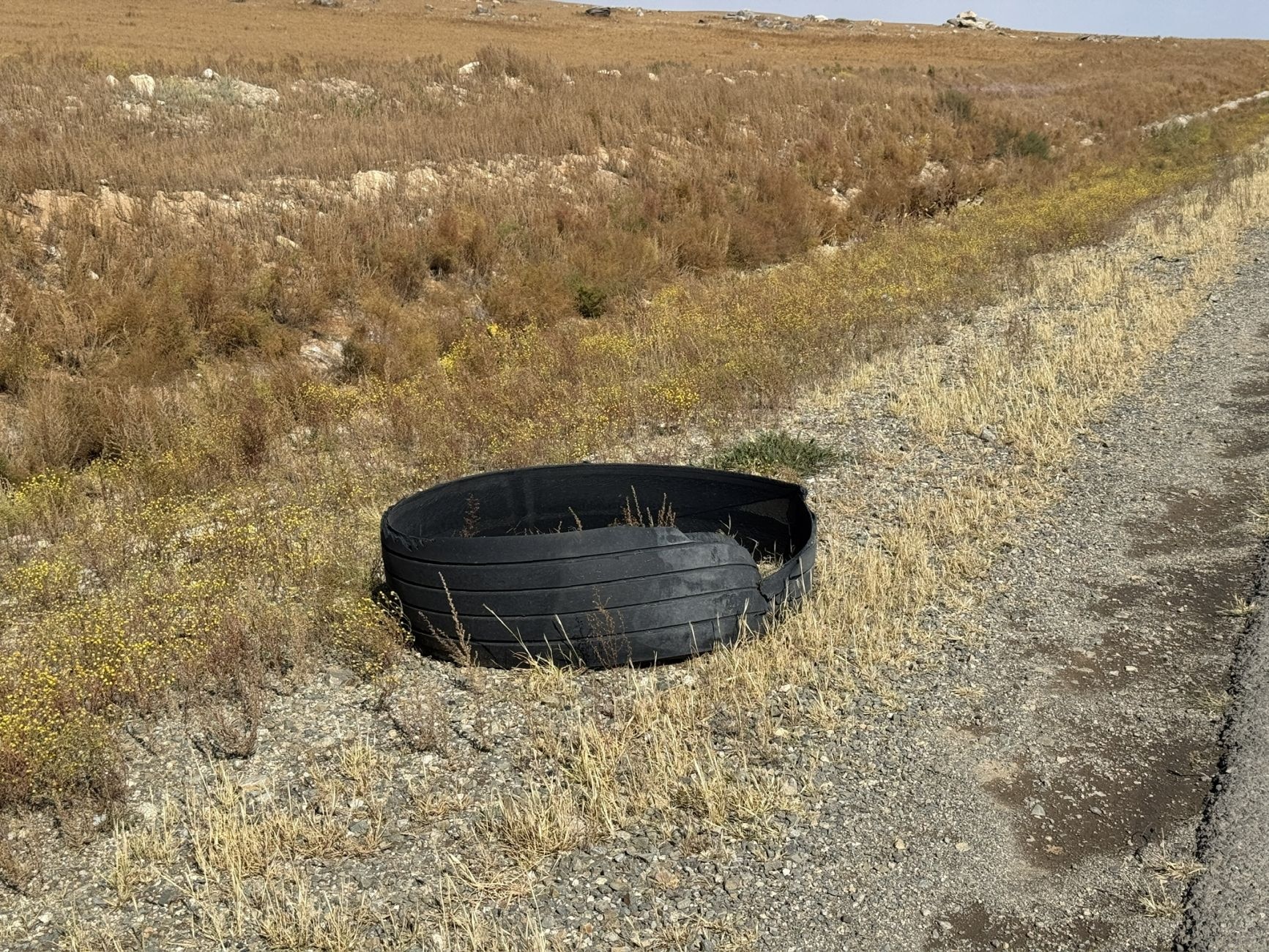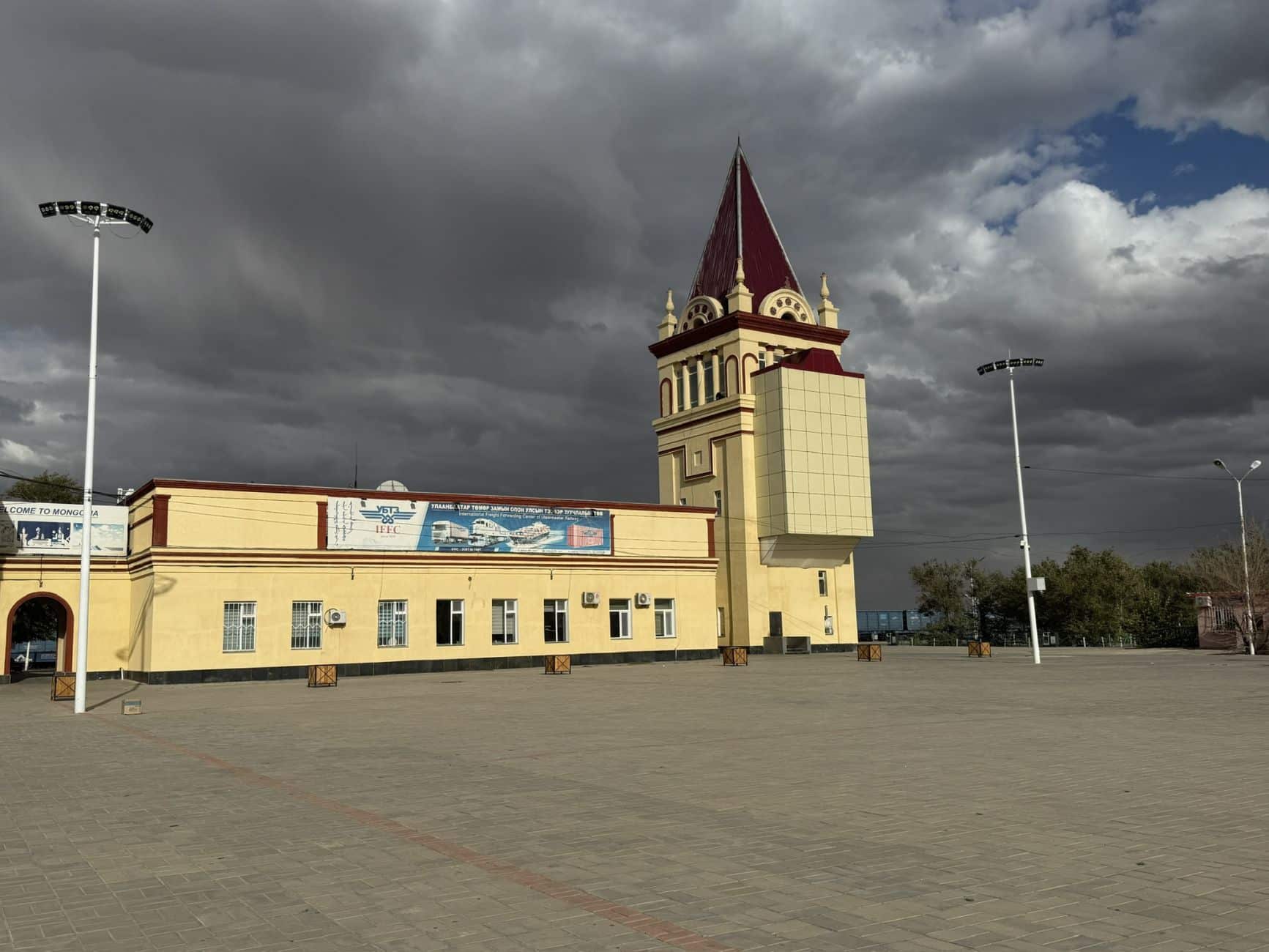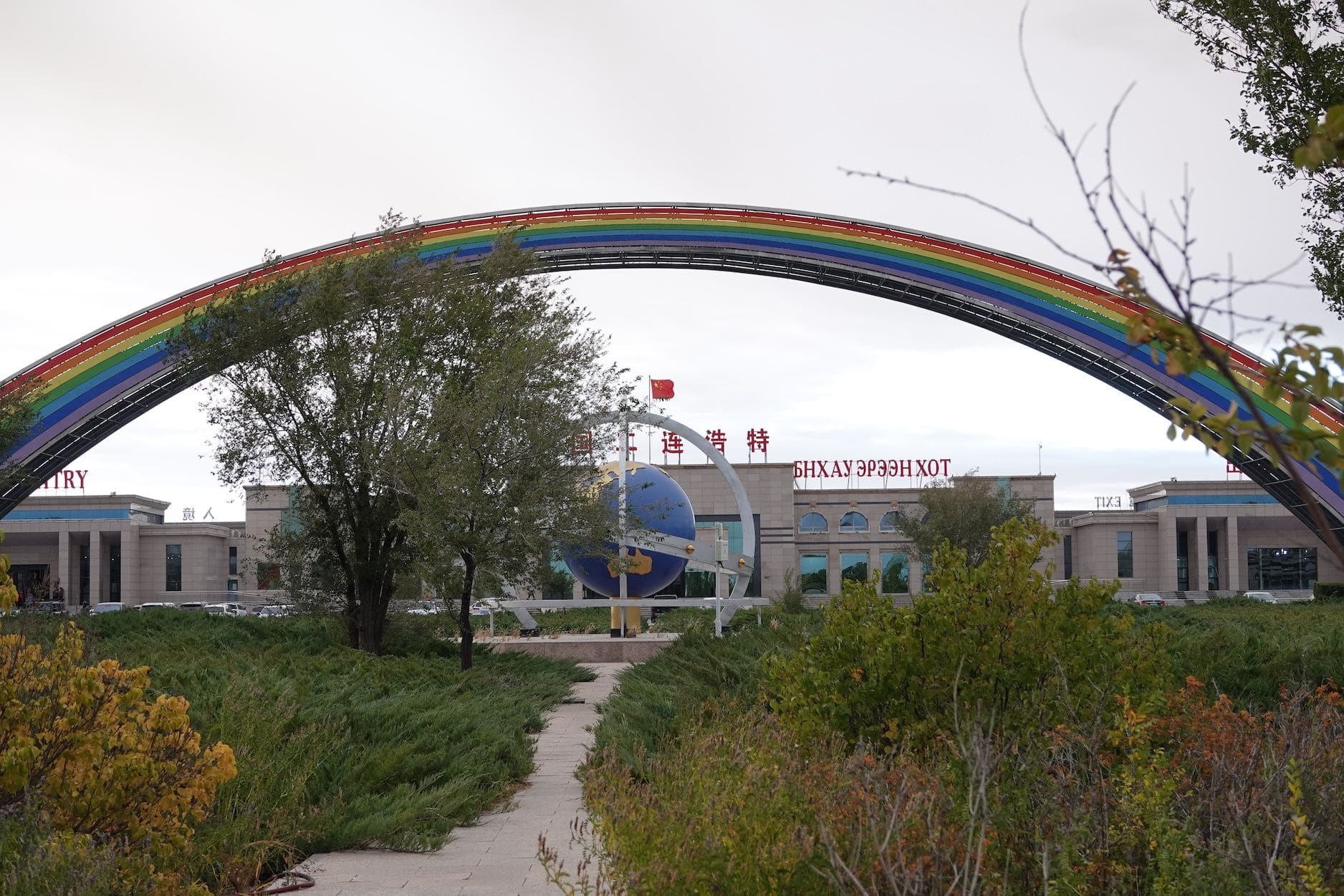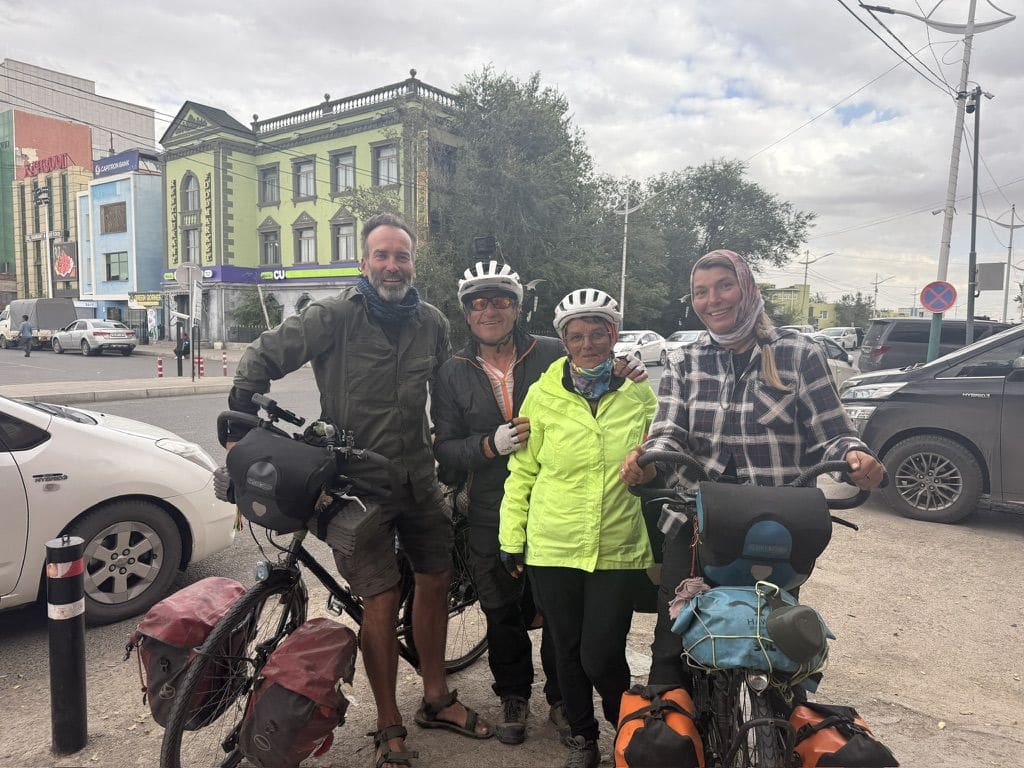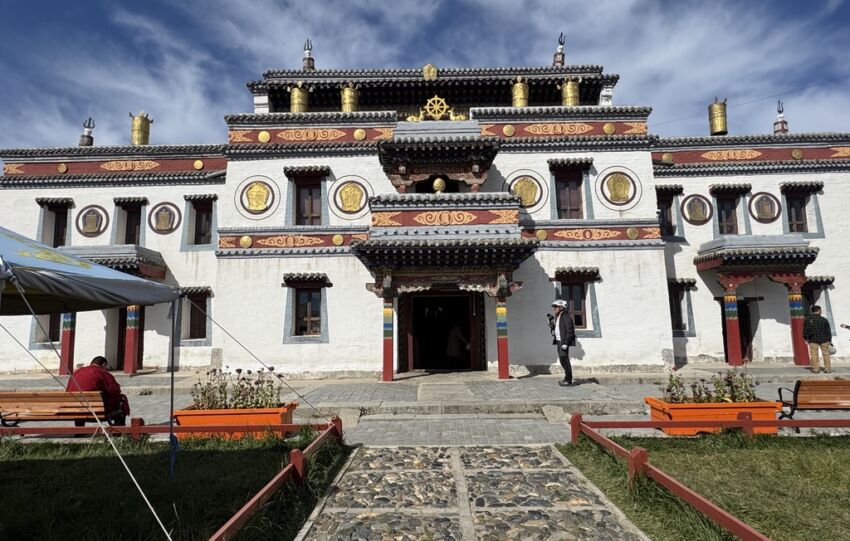Gobi Desert
Share This Article
From September 15th to 23rd from Ulaanbaatar to the Chinese border via the Gobi Desert
Getting out of Ulaanbaatar
Leaving Ulaanbaatar is quite a long way, and it’s cold today. We’ve swapped shorts for long ones. We’re taking a beautiful bike path for over 20 km, which is pleasant, especially since there’s quite a bit of traffic this Monday morning.
On the way out of town, we stopped to visit a cemetery, but it was impossible to enter; it was closed. The number of graves was impressive, and they all had the same shape. A large Buddha stood in the middle of the main avenue.
We don’t drive much on this first day because the wind that has picked up is pushing us sideways, which is quite dangerous. We stop at a health institute that allows us to sleep in a yurt.
The TransMongol
The next 300 km will take us through two villages: Choyr and Airag. Between these two points, only nomads live, accompanying their herds.
The silence that reigns in these desert areas is disturbed by the noise of the wind and locomotives. This is where the legendary ” Trans-Mongolian ” train passes. It leaves Russia, crosses Mongolia, and stops in China. The peculiarity of Mongolia is that there is only one track. About every twenty kilometers, there is a station with two tracks where you can change trains. All trains run on diesel locomotives; they are very slow. Freight trains also pass. The Trans-Mongolian takes 12 hours to cover the 600 kilometers between Ulaanbaatar and China.
Before us the Gobi Desert
After the town of Airag, where we were able to sleep in a very comfortable guesthouse, we enter the Gobi Desert via the road that connects to China. Very quickly, we are isolated in a vast, treeless area. We are in one of the largest deserts in the world. Areas where we only encounter nomads and their herds. We pass through one last small town, Saynshand, and then we will travel 250 km in the desert before reaching the Chinese border. As far as the eye can see, an ochre yellow color made up of sand and dry grass. It is a rather indescribable spectacle. Despite this rather hostile universe, herds of animals and hordes of horses continue to graze. It is a shame that plastic pollution has also reached these places.
The Chinese border
After 42 days in Mongolia, on September 23rd we re-enter China. Crossing borders is always a complicated experience, especially in China. The border crossing between Mongolia and China is several kilometers long, and cycling is prohibited. Here, all luggage and bicycles will be loaded onto a bus and only unloaded several times for checks. A real headache because you have to be very vigilant so as not to lose or forget anything.
Tonight we will sleep in a very comfortable Chinese hotel.
The pensive minute
So why cross a desert, where by definition it is desert and therefore there is a priori nothing to see. This is of course a personal point of view but the desert by its immensity, its colors, its shapes which change according to the light is a fascinating place. A place where animals wander freely in a world of silence disturbed only by the noise of the engines of passing vehicles.
The vastness of the desert can certainly be frightening, with its endless horizon stretching as far as the eye can see. The wind blows and whistles regularly. It is undoubtedly where there is nothing to see that we can hope to see something, that we can reflect on the difficult living conditions of nomads in these austere places without water.
In conclusion, what can a desert crossing bring? Probably nothing special, except an unforgettable experience in life, a moment of exile from civilization, and also a moment without connection, because the internet has not yet really found its place in these places.
Encounter :
- Alexander and his wife Agnes, a German couple who travel around the world.
Route: During these nine days, we covered 776 km. You can find our itinerary by clicking here.

